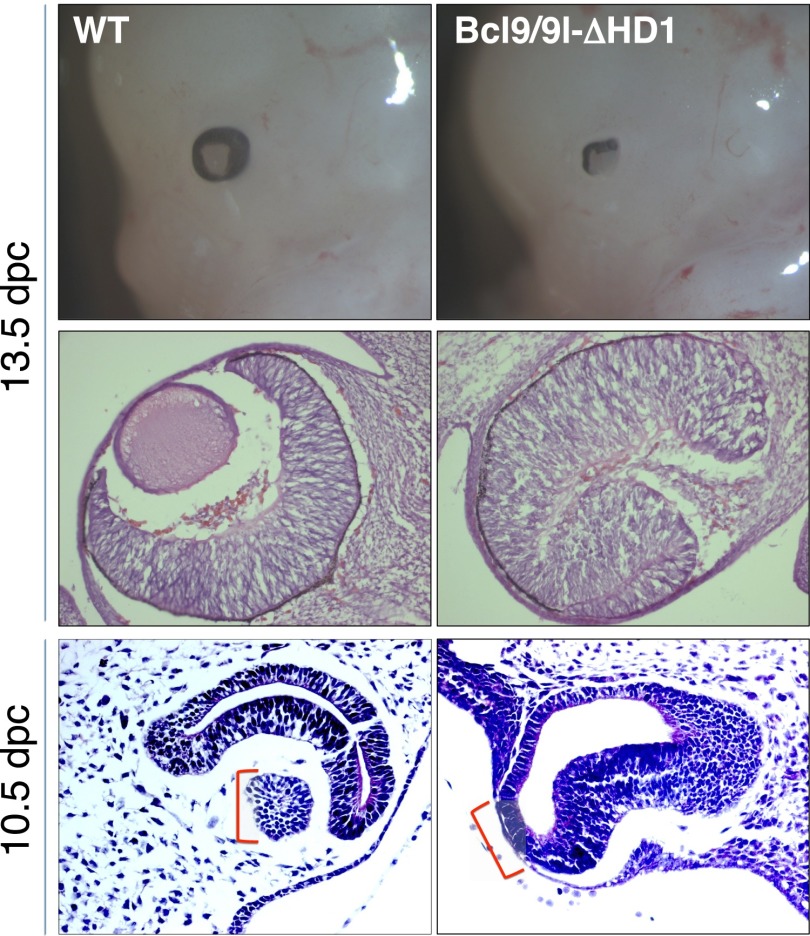Figure 2.
Bcl9/9l has a role in early lens development. (Top panels) Bcl9/9l-ΔHD1 double-mutant embryos display an eye defect highly reminiscent of the one previously described for Pygo2 loss of function (Song et al. 2007). (Middle panels) The dissection of the eye structure at this stage (i.e., 13.5 dpc) shows a complete absence of the lens accompanied by an enlarged developing retina, a feature that resembles the lens-specific conditional loss of Pax6 (Ashery-Padan 2000). (Bottom panels) Bcl9/9l-ΔHD1 mutant embryos at 10.5 dpc fail to induce eye placode thickening and subsequent lens pit formation. A square bracket indicates the lens vesicle in the wild-type (WT) eye and the region of the surface head ectoderm that, in Bcl9/9l-ΔHD1 mutants, despite lying close to the optic vesicle, fails to form a lens placode.

